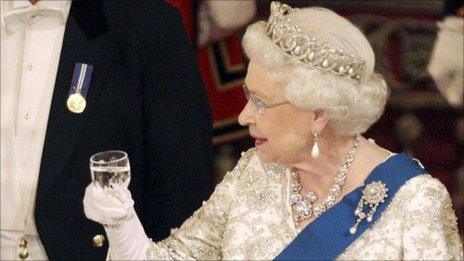Theresa May and the art of the curtsy
- Published
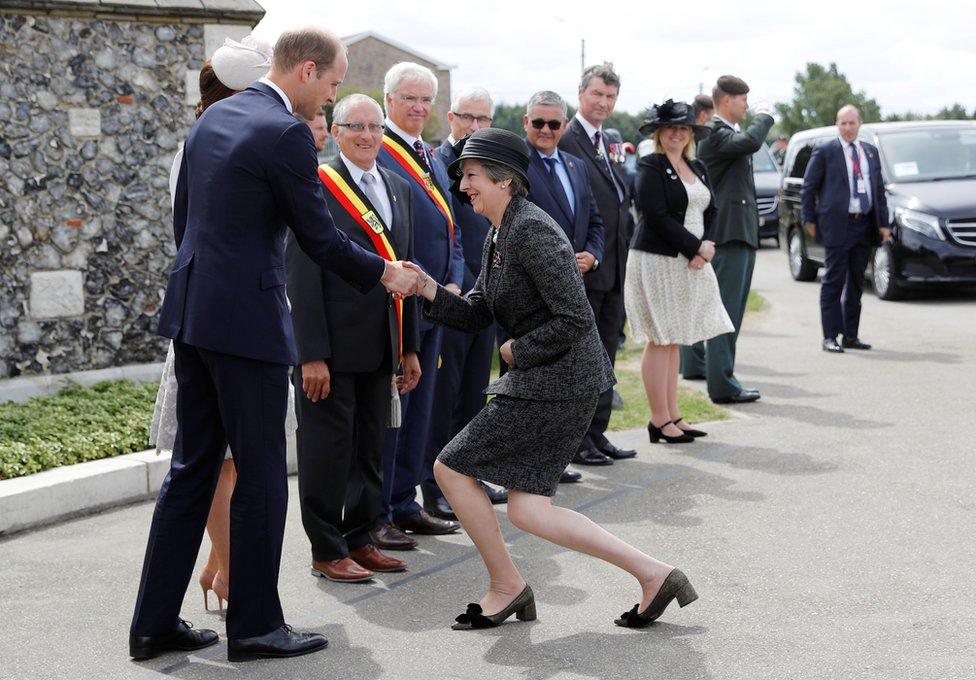
How low should one go when curtsying? The prime minister's curtsy has been attracting some attention for its impressive depth.
She's performed the gesture for members of the Royal Family before, but it was the particularly deep curtsy to Prince William at World War One commemorations that have made recent headlines.
So is there a problem with the way she curtsies? How are you meant to do it - and, for that matter, why? Etiquette and royal experts have the answers.
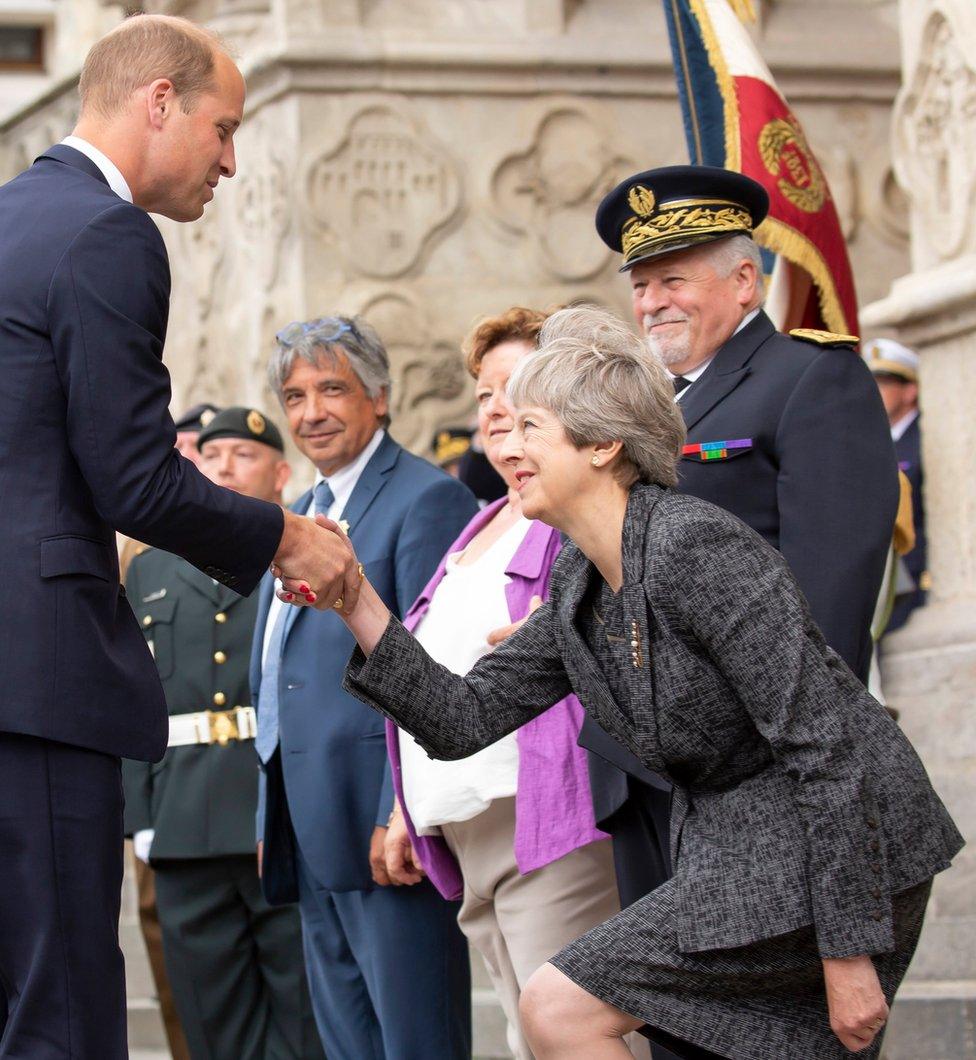
What's the issue with Theresa May's style?
Etiquette expert Jean Broke-Smith, who's been teaching the art of the curtsy for decades, said: "She makes it look very awkward and drops so low.
"The knees should be virtually connected but hers are about 10 inches apart. How she didn't fall over, I don't know. I was trying it just now and I couldn't balance."
"I feel a bit sorry for her," says author and modern manners columnist Sophia Money-Coutts, who admits she was "fascinated", external by the very low curtsy. "But I think someone should have a word.
"If you're a Tory PM stooping like that in front of the Queen, you're going to get a backlash. Reining it in a bit and doing a neat bob would be less controversial."
She adds of Mrs May's technique: "She really goes in for the curtsy. I'm half her age, but my knees would go snap, crackle and pop if I tried it."
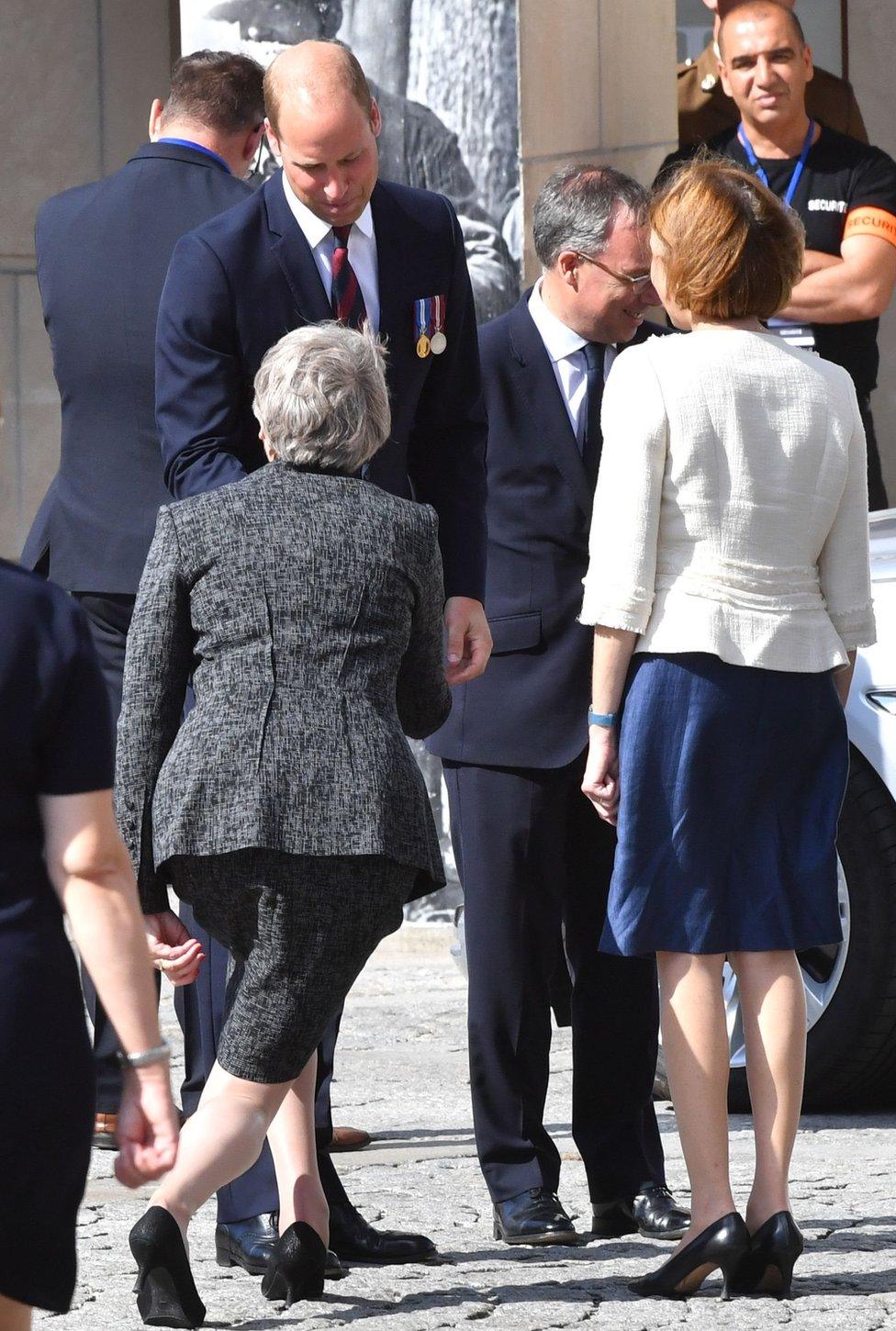
But Ms Broke-Smith, who was principal of the Lucie Clayton finishing and modelling school for 30 years, praised the prime minister.
She said: "The most important thing is that she is respectful - and just look at that eye contact with Prince William and that smile."
So how exactly are you meant to curtsy?
Adam Partridge from etiquette guide Debrett's, external, says it should be a "brief, discreet movement" lasting "a matter of seconds". Here's his step-by-step guide:
From standing, transfer your weight onto one foot, usually the left
Place the ball of your other foot behind and slightly outside the standing ankle
Bend your front knee, always maintaining eye contact

BBC royal correspondent Jonny Dymond advises that "a straight back is everything".
He says: "There's no need to drop towards the floor clutching your skirts in the presence of a Royal Highness. Ladies (and gents) are permitted a bow, or even a (significant) inclination of the head. More than a nod, please.
"If you are going for the curtsy you want a straight back, to mitigate the chances of toppling forwards into a Royal personage. Overdoing eye contact might be seen as showing off.
"Do not curtsy too deep. Obviously struggling to return to a standing position is judged unseemly in royal circles.
"Finally, do not appear too smug as you complete the flawless curtsy."
Noted.
What does the Royal Family say about it?
The Royal Family's official line is that "there are no obligatory codes of behaviour when meeting The Queen or a member of the Royal Family", but its website notes that despite this, "many people wish to observe the traditional forms", external.
"For men this is a neck bow (from the head only) whilst women do a small curtsy," they advise. "Other people prefer simply to shake hands in the usual way."
One of those who opted for the handshake was Cherie Blair, which "attracted controversy as it was seen as making a statement about her republican views", says royal historian Carolyn Harris.
"Australian Prime Minister Julia Gillard chose a head bow and handshake when she met the Queen in 2011, which also attracted negative comment in the press, leading to the prime minister publicly defending her choice."
So why curtsy instead of shaking hands?
Many people choose to curtsy or bow when meeting a member of the Royal Family as it shows "respect and good manners", says Mr Partridge.
"Nowadays, it's a nod to tradition. The Queen is quite relaxed about it however and a simple handshake will suffice.
"She wants people to feel comfortable, so they should do what's best for them. But I think people do like the idea of tradition."
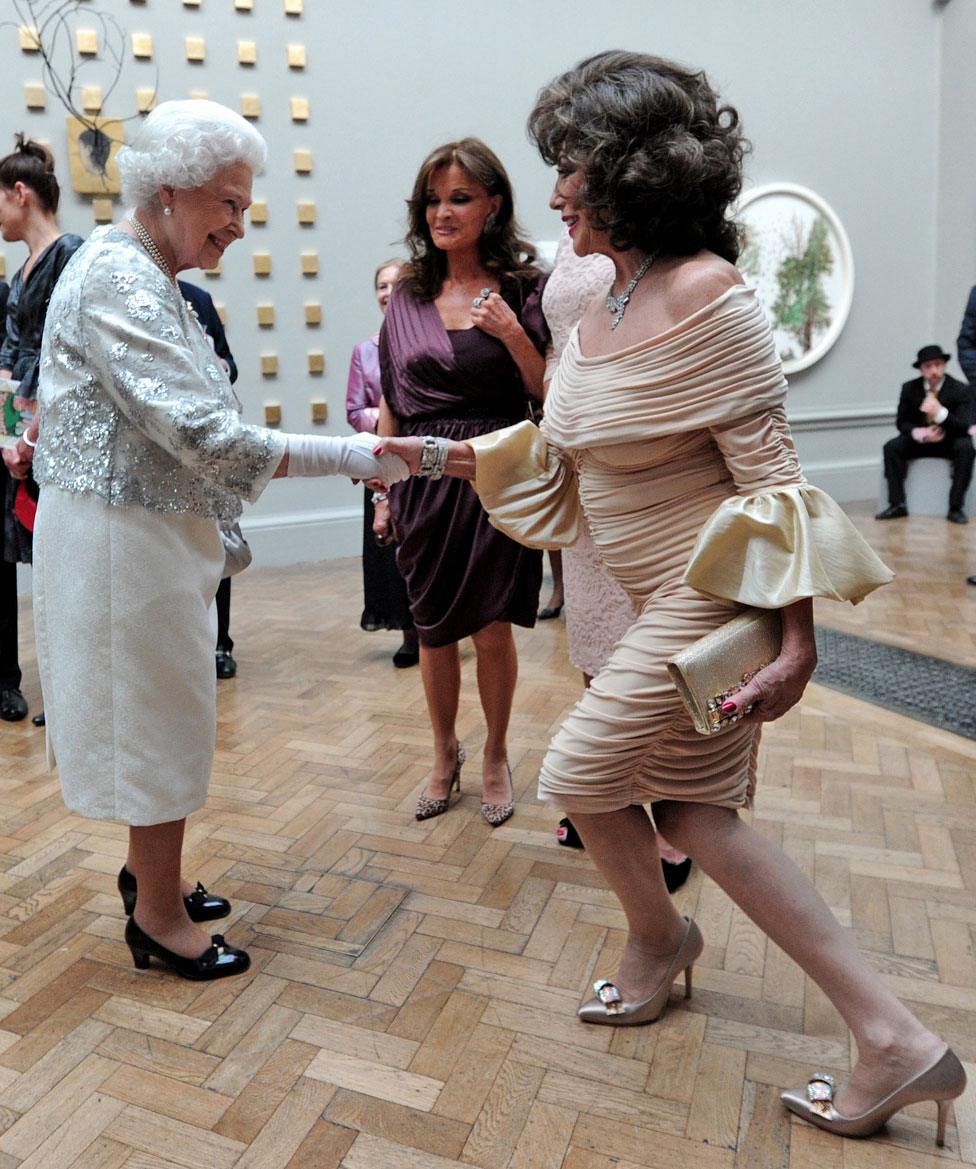
Joan Collins goes for the curtsy when meeting the Queen at the Royal Academy in 2012
Ms Money-Coutts says the whole notion can seem faintly ludicrous now, adding: "Curtseying was from the days of big crinoline skirts and they would fall very dramatically - the deeper the curtsy, the more effective it was."
But, she adds: "It's mad, but I love it. It's quite eccentric."
What are the rules on who gets the curtsy treatment?
There are fairly complicated rules about which royals curtsy to whom, as Mr Partridge explains.
"For example, the Duchess of Cambridge and Duchess of Sussex curtsy to royal princesses by blood - unless they are with their husbands, in which case the princesses would curtsy to them instead."
Well, that makes total sense.

Princess Diana curtsied as she met Queen Sofia of Spain in April 1987
Ms Money-Coutts adds: "I do wonder what happens behind closed doors and if they bother with all that bowing and bobbing when they're coming down to breakfast."
What are the faux-pas to avoid?
"It should be a dignified and discreet bob," says Ms Broke-Smith. "You don't want to be like one of those opera singers who wave their right arm around as they curtsy.
"It's almost too dramatic and making a point."
Mr Partridge adds: "You do find people can go overboard and do very flamboyant curtseys and bows. These big, grandiose gestures are a bit over the top."
Have others had issues with curtsying?
It's also been noted that Sarah Ferguson, Duchess of York, is a fan of the deep curtsy, as demonstrated in front of the Queen, external at Royal Ascot this summer.
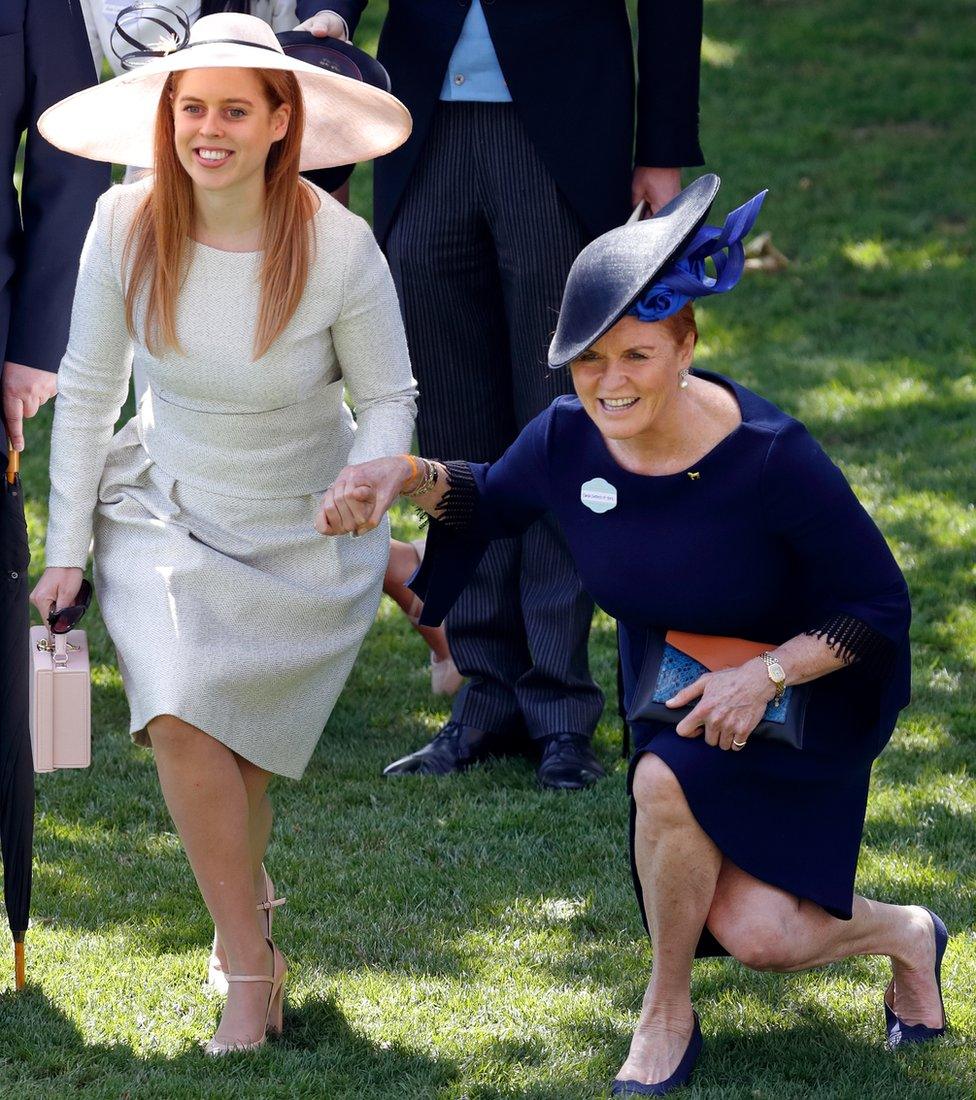
Princess Beatrice and the Duchess of York curtsy to the Queen
Many people seem a bit nervous about the whole thing.
Mamma Mia star Julie Walters admitted that when she was made a dame, she had to ask herself "when do I curtsy?".
She's not the only one to find investitures nerve-wracking, with actress Sarah Lancashire saying she was worried she'd fall over when she curtsied.
Are there other styles of curtsying?
Well if you thought that the standard curtsy was a bit much, there is also the Texas Dip, traditionally used at debutante balls, as Mr Partridge from Debrett's explains.
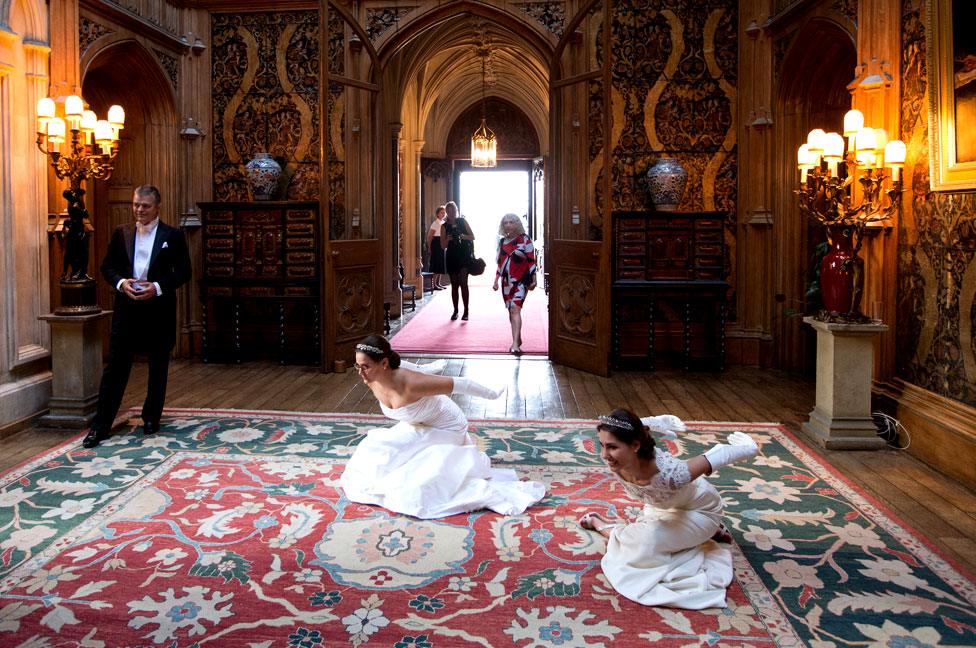
Debutantes rehearse their 'Texas Dip' curtsy prior to the Queen Charlotte's Ball at Highclere Castle
"There, the arms will be extended to either side, like wings. The legs are crossed and you drop your back knee to the ground, so you sit down with your legs folded."
Perhaps Mrs May's curtsy isn't so unusual after all.
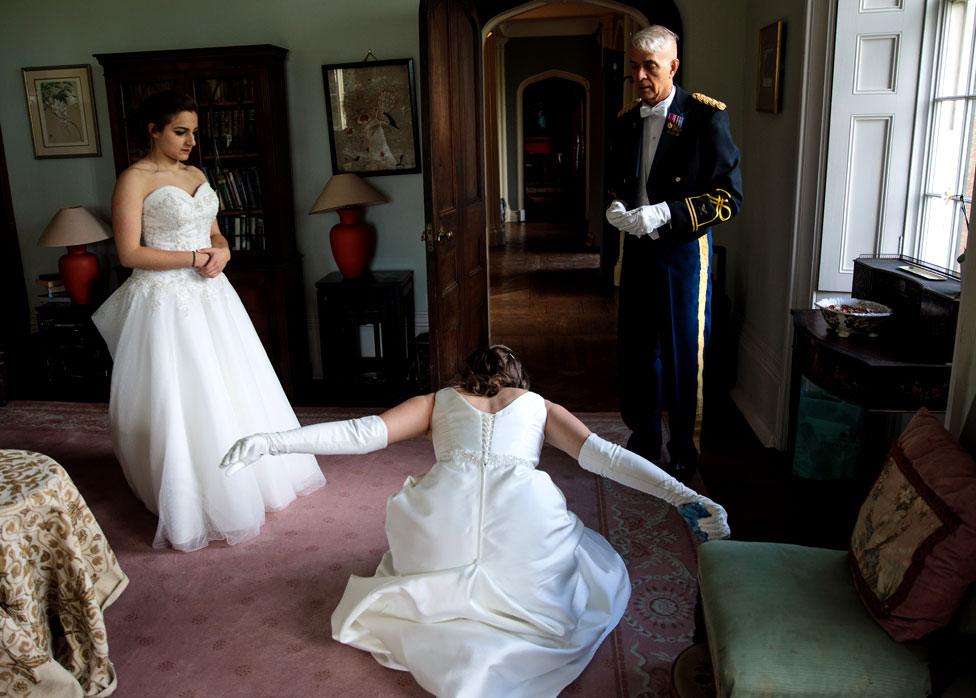
A debutante goes low as she practices her dip curtsy
- Published20 July 2017

- Published26 May 2011
